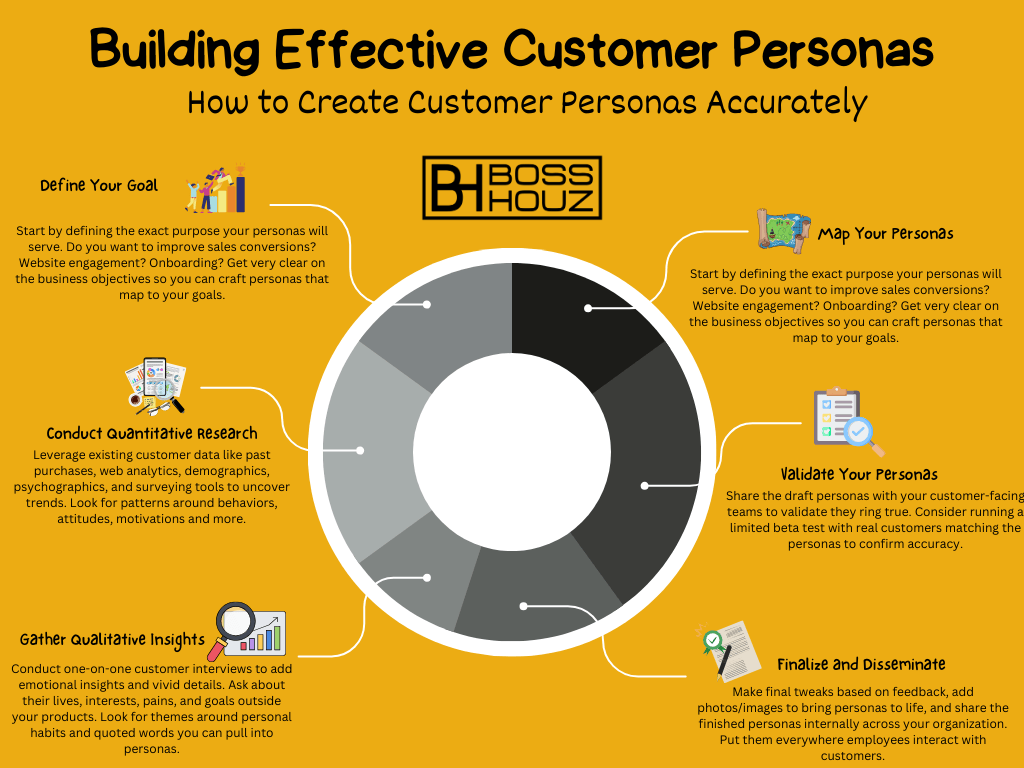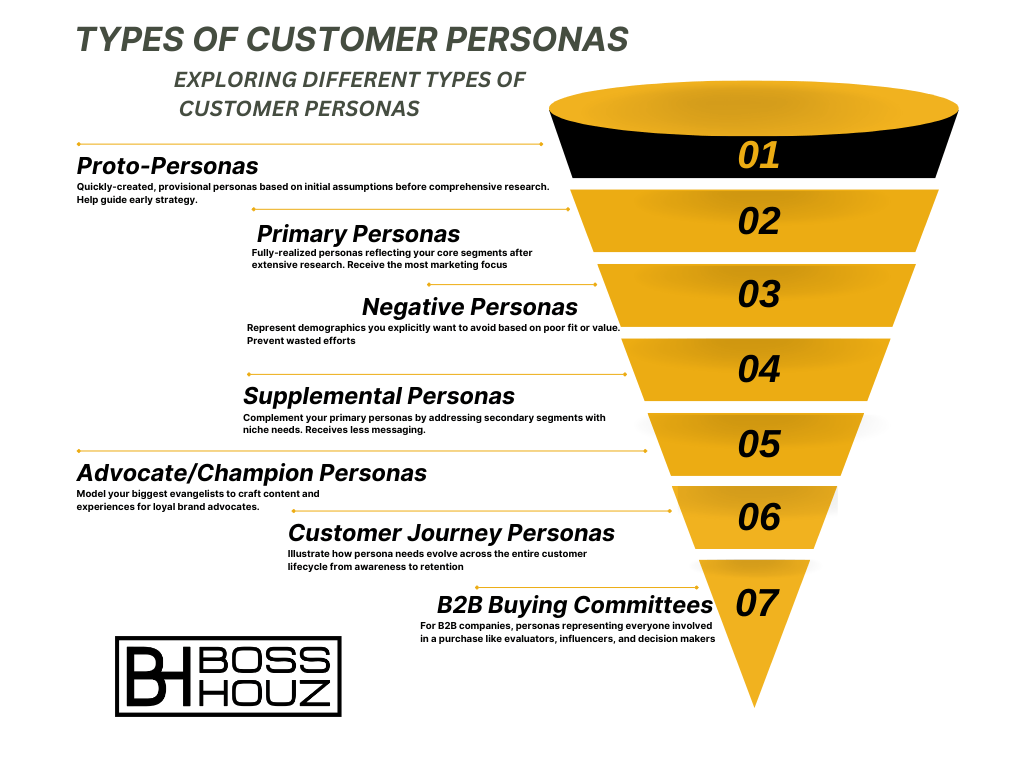Customer personas are one of the most important tools in a marketer’s toolkit. They help businesses understand their target audience on a deeper level and create more relevant, impactful marketing campaigns. This comprehensive guide will explore everything small business owners and entrepreneurs need to know about crafting accurate and actionable customer personas.
We’ll start by examining what exactly customer personas are, why they’re so critical for success, and real-world examples of effective personas in action. From there, we’ll dive into the step-by-step process for creating personas through research, interviews, surveys, and more.
You’ll learn how to build main buyer personas as well as negative personas that represent demographics you want to avoid. We’ll also explore different categories of personas like proto-personas and provisional personas.
Once your personas are complete, we’ll discuss ways to integrate those insights across your business – from marketing and sales to product development and customer support. You’ll also discover emerging trends and new strategies in the world of persona creation.
By the end of this guide, you’ll feel equipped to develop high-impact personas and transform the way you connect with customers. Let’s get started!
Table of Contents
Part 1: Understanding Customer Personas
Before we dive into creating personas, let’s build a solid foundation on what exactly customer personas are and why they’re so vital for your business. This first section will provide that baseline knowledge.
1.1 What Are Customer Personas?
A customer persona is a detailed, fictional representation of your ideal target audience. Personas go far beyond basic demographic information. They dive deep into the goals, motivations, pain points, and behaviors of specific customer segments.
While personas are made up, they are developed through extensive research including surveys, interviews, and data analysis. The end result is a holistic profile that humanizes your customers and enables you to speak directly to their needs.
Some key elements that make up a customer persona include:
- Basic Demographics – Age, location, income level, education, family status
- Motivations and Goals – What they want to achieve professionally and personally
- Challenges and Pain Points – What frustrates them or prevents them from reaching their goals
- Common Objections – Reasons they might hesitate to purchase your product
- Behavior Patterns – Where they spend their time online, how they like to engage with brands
- Brand Affinity – What brands they love, influences their decisions
- Key Quotes – Sample comments in their own voice that bring the persona to life
Buyer Personas vs. User Personas
There are two main types of customer personas:
- Buyer Personas: Represent the decision makers who hold purchasing power and influence. These are often leaders or executives.
- User Personas: Represent the people who actively use your product or service on a regular basis. They provide insights on user experience.
For example, a contractor service would create a buyer persona for homeowners looking to remodel their kitchens. They would also build user personas for the individual contractors on their platform providing the renovation services.
Most businesses need both buyer and user personas to cover the full customer lifecycle. You can also have multiple personas within each category to represent different segments.
1.2 Why Are Customer Personas Important?
Now that you know what personas are, let’s explore why they’re so critical for business success:
Personas Lead to Higher Conversion Rates
Personas help you craft marketing messages that directly address your customers’ needs. This results in higher conversion rates across sales, email marketing, advertising, landing pages, and more.
According to research by HubSpot, companies that leverage personas see conversion rates improve by up to 171%. Clearly, personas pay off exponentially.
Personas Enable Personalization
Today’s customers expect hyper-personalized experiences. Personas allow you to segment your audience and tailor messaging for each subgroup instead of relying on a generic, one-size-fits-all approach.
Personas Inspire Emotional Connections
By humanizing your customers with vivid details like quotes and backstories, personas trigger an emotional response from your team. This creates deeper empathy and connections with your audience.
Personas Uncover New Opportunities
The research and insights gathered to build personas often uncover underserved needs or untapped markets. This enables you to expand to new customer segments and opportunities.
1.3 Customer Persona Examples From Real-Life
Personas aren’t just theoretical – many successful companies have reaped tremendous value from developing personas. Here are a few powerful examples:
HubSpot
The Inbound marketing software firm HubSpot created an iconic buyer persona known as Mary. Mary is a Director of Marketing at an industrial supplies company representing their target mid-market customer.
This vivid persona includes personal details like enjoying cooking classes and treasuring family time. HubSpot uses Mary across their site, social media, emails, and more to guide messaging.
Neil Patel
Neil Patel, co-founder of the content marketing software QuickSprout, takes personas even further. His team developed over a dozen different buyer and user personas complete with names, photos, backgrounds, and quotes.
They reference these personas constantly when creating content to ensure relevancy. Patel also recommends sending new hires the personas right away so they can instantly understand the core customers.
Mailchimp
The email marketing platform Mailchimp created learner persona archetypes to categorize customers based on their expertise levels. Personas like Newbie Nina and Seasoned Sara ensure their education content provides the right information at the right time.
These examples prove that robust personas lead to improved content, messaging, features, and overall customer alignment. Now let’s look at how to build effective personas for your own business.
Part 2: Building Effective Customer Personas


Crafting precise, insightful personas takes time and diligent work. This section will guide you through research, interviews, surveys, and key steps to construct accurate personas.
2.1 How to Create Customer Personas Accurately
Follow this step-by-step process to develop data-backed personas that precisely reflect your customers:
Step 1: Define Your Goal
Start by defining the exact purpose your personas will serve. Do you want to improve sales conversions? Website engagement? Onboarding? Get very clear on the business objectives so you can craft personas that map to your goals.
Step 2: Conduct Quantitative Research
Leverage existing customer data like past purchases, web analytics, demographics, psychographics, and surveying tools to uncover trends. Look for patterns around behaviors, attitudes, motivations and more.
Step 3: Gather Qualitative Insights
Conduct one-on-one customer interviews to add emotional insights and vivid details. Ask about their lives, interests, pains, and goals outside your products. Look for themes around personal habits and quoted words you can pull into personas.
Step 4: Map Your Personas
Organize your research findings into draft persona templates highlighting demographics, behaviors, goals, quotes, and other key elements. Identify 2-4 primary personas and give them descriptive names.
Step 5: Validate Your Personas
Share the draft personas with your customer-facing teams to validate they ring true. Consider running a limited beta test with real customers matching the personas to confirm accuracy.
Step 6: Finalize and Disseminate
Make final tweaks based on feedback, add photos/images to bring personas to life, and share the finished personas internally across your organization. Put them everywhere employees interact with customers.
Following this rigorous process prevents personas from being thinly-veiled assumptions or stereotypes. The result is an actionable foundation for your marketing and product development.
2.2 Customer Persona Interview Questions Templates
Interviews are a phenomenal tool for gathering qualitative insights when building personas. Use these sample questions to structure your customer conversations:
Background Questions
- Walk me through a typical day in your life.
- Tell me about your job and role. What do you love about it?
- How would your closest friends describe you?
Lifestyle Questions
- What does your family situation look like?
- What hobbies and interests do you enjoy outside of work?
- What publications or blogs do you read regularly?
Product/Service Questions
- How did you first discover our product/service?
- What prompted you to buy/sign up from us versus competitors?
- Walk me through your first experience using our product/service. What impressed you? What can we improve?
Motivation Questions
- What are your top frustrations related to [problem we solve]?
- What goals or outcomes are you hoping to achieve through [our product/service]?
- How would your daily life look different if that problem was solved?
Brand Perception Questions
- What emotions come to mind when you think of our brand?
- If our brand was an animal, what would it be and why?
- How would you describe our brand to a friend considering our product?
Leave time for the customer to ask questions or provide additional context too. Their candid insights will fuel your persona development.
2.3 Steps to Build Personas Using Survey Templates
Surveys provide another excellent channel for efficiently gathering data at scale that can inform your personas. Here is a process for leveraging surveys:
Step 1: Identify Your Core Research Questions
Just like interviews, start by defining the key questions your personas should answer. What do you need to know about your different customer segments?
Step 2: Select Your Survey Tool
Choose a survey provider like SurveyMonkey, Google Surveys, Typeform, or SurveyGizmo. Ensure it has skips/branches so you can tailor questions based on responses.
Step 3: Design Your Questionnaire
Pull together 20-30 targeted questions around demographics, behaviors, motivations, and attitudes. Mix multiple choice, scales, and open-ends.
Step 4: Promote Your Survey
Share your survey via email, website banners, or paid ads. Consider incentivizing with discounts, ebooks, or donations to increase response rates.
Step 5: Analyze the Results
Once you have at least 100 respondents, run reports on key trends around responses, geography, job titles, and other variables. Look for patterns you can incorporate into personas.
Step 6: Incorporate Insights into Personas
Add relevant statistics, behaviors, pain points and quotes from the survey into your final personas to back up findings with real data.
Surveys provide quantitative validation to balance qualitative insights from interviews. Combining both approaches ensures well-rounded, credible personas.
Part 3: Types of Customer Personas


Now that we’ve covered how to research and build personas, let’s explore the different categories and types of personas you may create.
3.1 Exploring Different Types of Customer Personas
Personas can take many forms beyond just core target personas. Different persona types to consider include:
- Proto-Personas: Quickly-created, provisional personas based on initial assumptions before comprehensive research. Help guide early strategy.
- Primary Personas: Fully-realized personas reflecting your core segments after extensive research. Receive the most marketing focus.
- Negative Personas: Represent demographics you explicitly want to avoid based on poor fit or value. Prevent wasted efforts.
- Supplemental Personas: Complement your primary personas by addressing secondary segments with niche needs. Receives less messaging.
- Advocate/Champion Personas: Model your biggest evangelists to craft content and experiences for loyal brand advocates.
- Customer Journey Personas: Illustrate how persona needs evolve across the entire customer lifecycle from awareness to retention.
- B2B Buying Committees: For B2B companies, personas representing everyone involved in a purchase like evaluators, influencers, and decision makers.
Having a range of personas prevents concentrating on just one “average” persona. Think through what types make sense for your unique business needs and customers.
3.2 Negative Buyer Personas: Who to Exclude
One often overlooked but highly valuable persona type is the negative persona. This represents demographics or segments you explicitly want to avoid targeting.
For example, a dog daycare may create a negative persona excluding families living in small apartments without yards, since they would not be viable customers.
Benefits of negative personas include:
- Increase Relevance: Avoid creating content for the wrong audiences that lack interest.
- Focus Efforts: Double down on your high-lifetime-value personas instead of distracting segments.
- Save Resources: Prevent wasted ad spend and search visibility on low-potential keywords.
- Set Expectations: Clarify for your team who not to pursue based on misfit needs.
Negative personas keep your messaging and product highly focused on your core target customers. Be sure to define exactly why certain groups are excluded through data points like:
- Income and purchase power
- Competing priorities that override their need for your offering
- Geographic regions that lack access to your services
By defining who specifically is excluded in your negative personas, you avoid incorrectly eliminating potential segments. Negative personas simply help refine your focus.


Part 4: Putting Customer Personas into Action
Now comes the fun part – activating your personas to influence everything you do as a business! This section will explore impactful ways to apply persona insights.
4.1 Applying Customer Personas to Marketing Strategies
Here are powerful ways to leverage your personas across marketing to improve relevance, engagement, and conversions:
Website Personalization
Tailor your website experience for different personas through targeted content and personalized messaging based on their needs.
For example, an e-commerce site could showcase parenting products for their “Busy Mom” persona and surf gear for their “Adventurer” persona.
Social Media Segmentation
Divide your audiences into persona-based lists on social platforms. Craft social content and ad campaigns customized to resonate with each group.
Email Marketing
Send targeted email campaigns to your persona segments featuring highly relevant subject lines, offers, and content. Also tailor your nurture streams based on persona behaviors.
Content Creation
Consistently reference your personas when creating content across blogs, ebooks, guides, and videos. Target their pain points and questions specifically.
PPC Ad Targeting
Refine your PPC ad targeting parameters based on your personas’ key demographics, interests, and behaviors.
SEO Keyword Research
Identify search terms and long-tail key phrases your different personas would use during their customer journeys. Target these keywords accordingly.
These examples just scratch the surface of persona applications across marketing. Ultimately, personas should inform everything you do to ensure relevance.
4.2 How Buyer Personas Inform Product Development
Your personas are equally as valuable for driving product strategy and development. Here are some key ways to leverage personas for building customer-focused products:
Prioritize New Features
Use your persona pain points as inspiration for new features and enhancements that directly address their unmet needs.
Design Intuitive User Experiences
Factor personas into UX design to create experiences tailored to different user segments’ abilities and preferences.
Define Your Minimum Viable Product (MVP)
Determine the bare minimum set of features needed to solve your core persona’s primary problems as your MVP product launch.
Forecast Adoption Rates
Analyze personas to predict which groups of users will be early adopters versus late majority adopters to set rollout expectations.
Inform Prototypes and User Testing
Recruit matching user testers from your persona groups to ensure your prototype designs resonate with real customers.
Guide Expansion Plans
Assess opportunities to expand to new customer segments by developing supplemental personas beyond your current user base.
This is just a sample of how personas can drive strategic product decisions and improvements tailored to your users’ needs.
Part 5: Trends and Emerging Strategies
Now that we’ve covered core persona foundations, let’s look at some emerging trends and strategies pushing personas even further.
5.1 Emerging Trends in Customer Persona Development
Persona creation is evolving quickly. Some key trends to watch include:
- Data-Driven Personas: Leveraging more quantitative data like clickstream analytics and sentiment analysis for precise personas.
- Integrated Personas: Centralizing personas across all platforms, channels, and tools through marketing automation.
- Video Personas: Bringing personas to life through interview-style videos with actors portraying the personas.
- AI-Powered Creation: Generating draft personas through artificial intelligence analysis of customer data and interactions.
- Virtual Reality Personas: Immersing employees into VR experiences that embody the personas for next-level empathy.
- Behavior-Based: Shifting from static traits to patterns focused on actions taken by the personas across customer journeys.
- Real-Time Adaptation: Continuously testing and modifying personas based on changes in customer interactions and feedback.
As consumers and data evolve, so do personas. Use these emerging strategies to stay at the cutting edge of persona practices.
Part 6: FAQ – Answering
Here are answers to some frequently asked questions about customer personas:
6.1 Frequently Asked Questions About Customer Personas
How many personas should I create?
Most experts recommend 2-4 primary personas to start. You can create secondary and negative personas as needed beyond that. Just be sure you have enough research and data to back up each one.
How often should personas be updated?
Revisit your personas every 6-12 months. People’s behaviors and needs change over time, so regular refreshing keeps personas aligned. Immediately update them if your business introduces major new products or services as well.
What tools do I need to create personas?
No fancy tools required! You can build personas using simple templates in Word, Google Docs, PowerPoint or design tools like Canva. Marketing automation platforms have templates too.
Should personas be used in external marketing?
Don’t directly reference your fictional personas publicly. Instead, use them internally to ensure your external messaging aligns with real customer needs.
How do I get my team to actually use personas?
Make personas easily accessible across your intranet, sales collateral, product design tools, and anywhere customer insights are needed. Host workshops to train staff on persona best practices.
How can I measure the ROI of personas?
Track key conversion metrics before and after persona-driven changes across sales, website engagement, retention, churn, and other KPIs. Measure growth to showcase ROI.
These are just a sampling of common persona questions. For continued learning, explore resources like HubSpot’s persona toolkit and Tony Zambito’s Buyer Persona Blog.
Conclusion
Creating detailed customer personas is a highly rewarding process that fuels immense business growth. Core personas breathe life into your ideal target segments, while supplemental and negative personas prevent misalignment across your strategies.
This guide provided actionable steps for building personas through research, surveys, interviews, and customer analysis. We explored ways to activate those personas across marketing, product development, content creation, and more. With the right personas guiding your efforts, you will craft truly customer-centric experiences that exceed expectations.
Savvy small businesses and entrepreneurs know leveraging personas leads to increased relevance, emotional connections, conversions, and ultimately revenue. Use the frameworks and examples here as your blueprint for persona success. Then watch your marketing and innovations thrive when they stem straight from your customers’ hearts.







